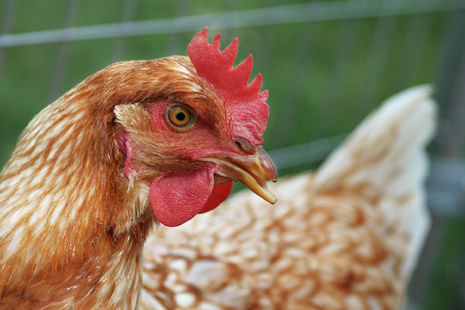Bird flu – another pandemic?
Maya Kunchur discusses whether H5N1 could spell disaster for humans

The Covid-19 pandemic drew public attention to something scientists already knew: a large-scale outbreak can begin anytime, anywhere. In the spotlight most recently has been bird flu. It was first detected among cattle only a few months ago and is now widespread within the species. As a trickle of cases continue to be confirmed in humans it is imperative that organisations and governments prepare for the worst, so that we can hope for the best.
"A large-scale outbreak can begin anytime, anywhere"
Bird/avian flu originated in winged poultry and has afflicted over 100 million members of the group. However, the situation changed in March this year when it was first detected in cattle, and avian flu has now affected over 180 US herds. It’s this transmission to cattle which has taken scientists by surprise despite the disease being on their radar for a few years. Disease spread is believed to be chiefly via infected milking equipment. Knowing the method of transmission is important to determine the most effective procedures to reduce spread, and so research is actively occurring into whether avian flu can spread efficiently via airborne droplets (like Covid-19 did) in cow sneezes. While the avian influenza virus has multiple strains, it’s H5N1 affecting cattle. H5N1 has also been detected in species such as foxes and cats and even caused mass mortality of around 5,000 sea lions.
The close contact people have with both cattle and poultry is a source of concern for the human population; of the 12 reported human cases in the last couple of years in the US, 11 followed exposure to one of these groups. Cases are generally attributed to close contact, so the Food and Drug Administration (FDA) has advised citizens against going near wild birds. Additionally, it’s important to stick to pasteurised milk, as this protects against transmission of the virus from dairy cows.
However, human cases aren’t new - over the past 20 years H5N1 has affected a few hundred humans and shown a worryingly high mortality rate of 56%. Thankfully, H5N1 has not yet been very contagious between humans: this is what scientists are keeping a look out for. Part of this entails keeping track of any new mutated variants, as they hold the potential to be more contagious.
Viruses – particularly RNA viruses like influenza - have a high mutability, meaning a small change in the virus could lead to a new strain which is quickly transmitted among humans. In fact, there have been four flu pandemics in the last century. The most recent was swine flu, but the worst was the ‘Spanish flu’ outbreak of 1918, with death toll estimates around 50 million.
"Knowing which strains could be of higher risk to humans allows early development of strain-specific protection"
To help anticipate more virulent strains, one group of scientists has generated a variant library. This records every possible mutation to the protein that has previously been used by H5 viruses to enter cells. These mutated strains were then tested for traits which are often found in viruses transmitted from avian to mammal hosts, such as their ability to bind to receptors in the upper airway. Knowing which strains could be of higher risk to humans allows early development of strain-specific protection such as vaccines.
"The more humans who contract the virus, the higher the chance of a new mutated strain"
Vaccines are an important tool protecting against rapid disease spread. Almost 700,000 doses of an influenza vaccine for H5 strains were recently purchased by the European Commission, as organisational bodies try to remain one step ahead. The cheapest vaccines often contain an attenuated (weakened) form of the virus, but an alternative technology that has been rapidly developing over the last couple of decades involves using mRNA. Both the Pfizer and Moderna Covid-19 vaccines relied on this more expensive but more efficient method. RNA vaccines are also easier to update for new strains.
Avian flu is part of a not-so-exclusive club of zoonotically transmitted diseases, so advice around keeping a distance with wild animals and being careful about hygiene and food processing should not be anything new. However, rapid spread through cattle via contaminated equipment surprised the scientific community and poses an increased level of humans coming into contact with infected animals. The more humans who contract the virus, the higher the chance of a new mutated strain which is contagious among humans, so a close eye remains on the situation. Organisations such as the Coalition for Epidemic Preparedness Innovations (CEPI) and the World Health Organisation’s Global Influenza Surveillance and Response System (GISRS) are constantly monitoring the situation, and active research is taking place to prepare in case of a widespread outbreak.
 News / Clare Hall spent over £500k opposing busway 24 December 2025
News / Clare Hall spent over £500k opposing busway 24 December 2025 Comment / The ‘class’ of Cambridge24 December 2025
Comment / The ‘class’ of Cambridge24 December 2025 News / Caius mourns its tree-mendous loss23 December 2025
News / Caius mourns its tree-mendous loss23 December 2025 Comment / League tables do more harm than good26 December 2025
Comment / League tables do more harm than good26 December 2025 News / Eight Cambridge researchers awarded €17m in ERC research grants27 December 2025
News / Eight Cambridge researchers awarded €17m in ERC research grants27 December 2025









